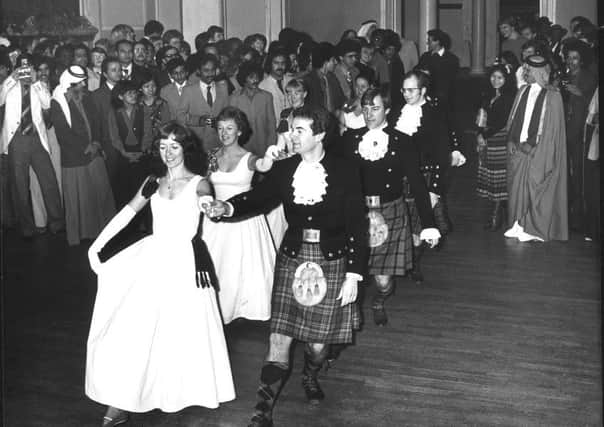Scots country dancing to appeal more to youngsters


But now the society dedicated to promoting Scotland’s proud country dancing tradition is on the lookout for a host of new, contemporary numbers.
The Royal Scottish Country Dance Society is seeking the help of revellers around the country in compiling a new compendium of dances.
Advertisement
Hide AdThe book, aimed at encouraging younger people to take up dances, will consider submissions that fuse the genre with pop or rap music.
The society’s convener, Phillip Whitley, said that innovation is required to maintain country dancing’s appeal and warned against complacency.
It has asked people to submit “imaginative, creative and progressively challenging” reels and jigs to be considered for inclusion in the new book.
The society hopes the call to arms will attract hundreds of entries, after which it will whittle them down to a shortlist of around 15 new dances.
Mr Whitley, who is overseeing the new book, recalled a recent trip to New Zealand where he witnessed a group of youngsters breakdancing during the middle section of an Eightsome Reel.
He said: “New dances will keep the tradition fresh. We can’t expect children and young people to keep dancing the same dances over and over – we need to keep them interested.
Advertisement
Hide Ad“Scottish country dancing and the music that goes with it, is more than just a museum piece of existing dances. It is a living, breathing form in exactly the same way folk music is, and traditions are handed down over the generations and built upon – this keeps it vital and relevant.
“We are looking for new dances as part of our commitment to engaging with young people. We will be accepting submissions fron across the world.”
Advertisement
Hide AdMr Whitley said that in the “golden heyday” of Scottish country dancing from the 1920s through to the 1950s, there were far fewer demands on young people’s time. But in the modern age, when there are countless other interests and hobbies available, the society believes it has to adapt.
“We would be doing a disservice to a longstanding Scottish trdition by not doing this as children are the future and if we establish an initial engagement with them at school age, it is something that will stay with them for life,” he explained.
The new book, whose target audience is prospective young dancers aged five to 16, will only accept dances which stay true to the established 32-bar formation and they must be danced progressively, either four times through for four couples in a longwise or a square set, or eight times through for two or three couples in a four-couple longwise set.
However, would-be composers are being encouraged to take a brave and imaginative approach and consider the use of instruments other than fiddles or accordions, mainstays of the genre. After deciding which new songs to include, the society plans to publish the new book in 2017.